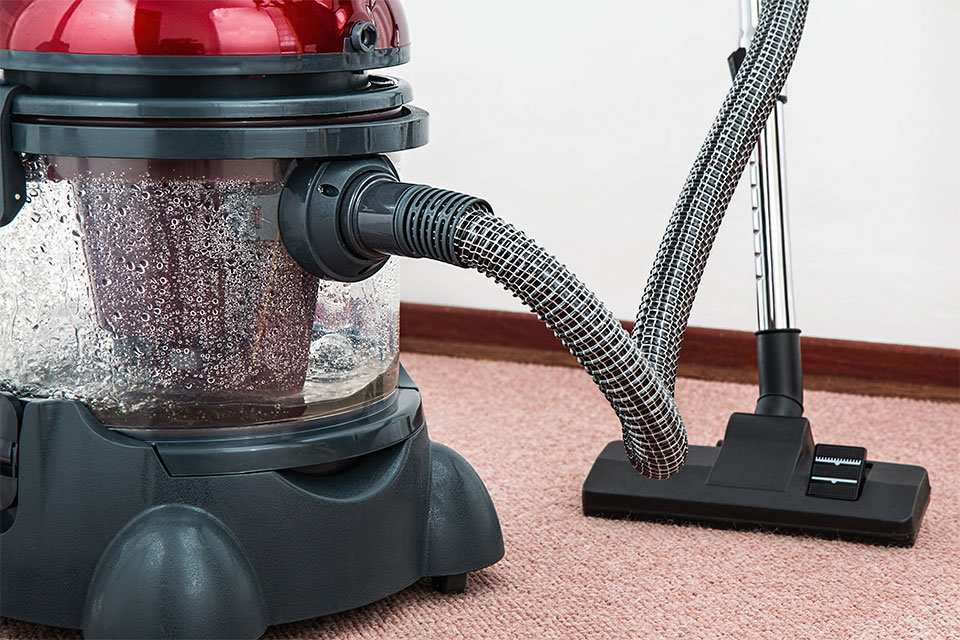
How to Dry Out Flooded Carpeting & Avoid Mold
Carpets add insulation, reduce sound, and add cozy ambiance. Unfortunately, they can also be notoriously hard to clean. Most of us know how to vacuum up dirt and have learned how to treat spills of various kinds. But what happens when the carpet has been submerged in floodwaters? Suddenly, there's more to worry about than just a wet floor or stained floor coverings. The risk of developing dangerous mold is very real. We've put together these tips to help save your carpets after a flood:
Remove Water as Quickly as Possible: DIY or Pros?

There are many types of water damage. Weather-related disasters, burst pipes, and sewage overflow can destroy your property and your carpets! When it’s time to clean up the mess, should you call on flood restoration experts, or do it yourself? DIY may cost less, but it demands more legwork. If you want your carpets cleaned fast, the pros definitely win. Professional cleaners have more advanced equipment that can clean away debris, heavy soils, and large stains.
Clean Up Excess Water with a Wet Dry Vacuum

Eliminate the standing water with the help of a good, sturdy wet dry vacuum. Make sure it's a vacuum with a decent gallon capacity and empty any dirt in it before using. If you have someone helping you with water removal, you may want to have them squeegee the water towards you so that you can get rid of it with the wet/dry vac. Removing all of the excess water from your floor is a necessary first step before you start getting your basement dried out.
Use Fans to Speed Up the Carpet Drying Process

To dry carpets fast, you need the moisture to evaporate. HVAC systems and blower fans can help circulate air across your carpets. This will help speed up the drying process. Opening windows on warm days is a natural way to help dry out your carpets.
Use a Dehumidifier to Dry Out the Room

You may need to dedicate an entire day or more to dry out your carpets. Opening all the windows and running a dehumidifier for 24 hours will dry wet carpets quickly. Air conditioning is a good dehumidifier, because it pulls moisture out of the air. If the outside air is damp or if it’s been raining, keep the windows closed.
Steam Clean Carpet & Flooring

To avoid damaging your furniture even more, move everything out of the room before you start steam cleaning the carpet. This will give you easy access to the carpet surface. Start by vacuum-cleaning the carpet before steam cleaning. Vacuuming removes the layer of dust and dirt on the carpet. Steam cleaning gives your carpets a more thorough and deeper clean that removes stubborn stains and grime. Steam cleaning your carpet after vacuuming is more efficient and will guarantee better results.
Sanitize Walls & Baseboards

After a flood, your carpet may not be the only source of dirt and mildew. Sanitize every part of the room, including walls and baseboards. Use soap and hot water to wipe down your walls and baseboards. Then take one part water to 1.5 parts of bleach, and scrub the area to remove dirt and grime. This will help prevent mold from growing. Make sure that every area in the room has been sanitized before you lay down a clean carpet.
Check Furniture

Furniture that has been submerged in water could have mildew, dirt, and a foul smell. Look for signs of water damage such as stains and streaks. If your furniture says wet for too long, it will promote mold growth. Any peeling or cracking suggests serious water damage. Consider replacing your furniture or hiring professional restorers to fix the damage.
After experiencing a flood, the only thing you want is to get back on your feet. Making your home normal and livable again, includes drying and sanitizing your carpets. Drying carpets yourself can be a long and tedious process. It may also require professional equipment and machinery. On average it can take about one to five days. If the damage is severe or if you live in a humid region, it may be better to consult with professionals. Consider hiring pros to get better, faster, and more efficient results.










